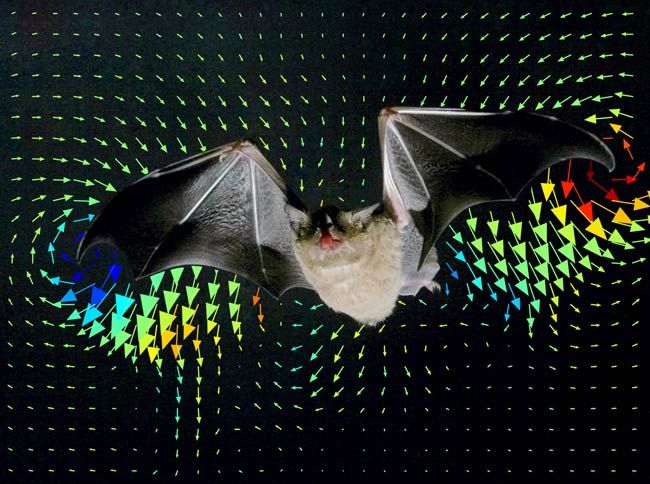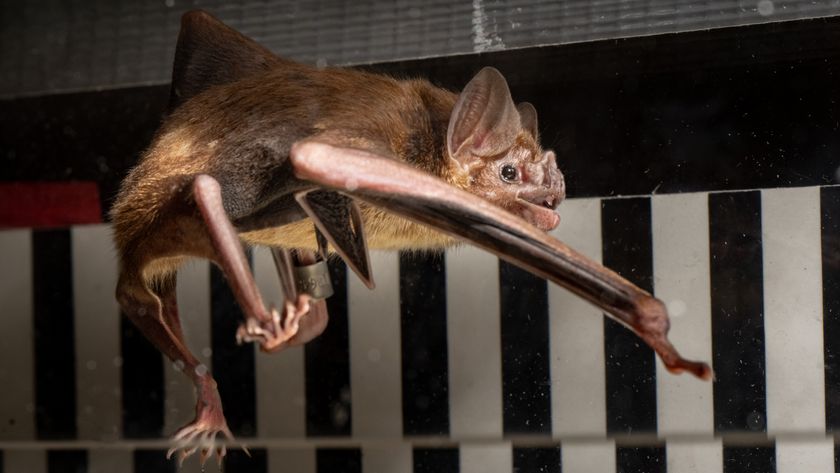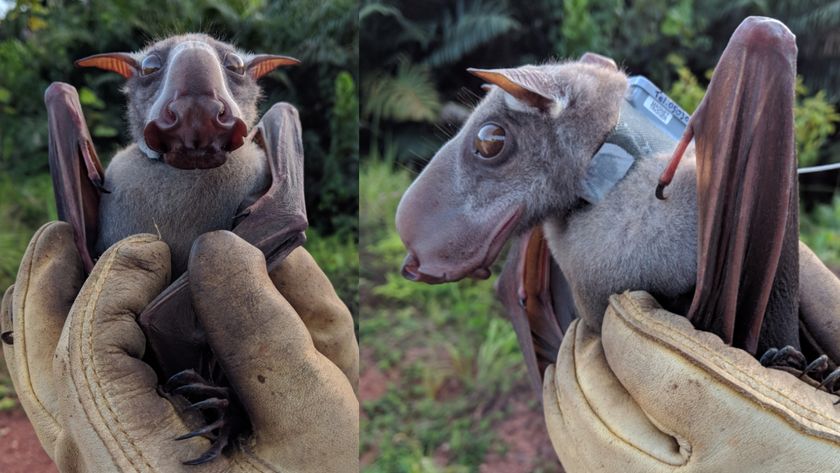Air Bubbles Keep Bats Afloat

Bats shouldn't be able to hover in the air like bumblebees, at least according to current aerodynamic theories. But they do.
To get to the bottom of the mystery — or the top of it, depending on your viewpoint — biologist Anders Hedenström of Lund University in Sweden put bats into a smoky wind tunnel outfitted with special cameras and lasers.
The footage showed bats employ the same, swirling "bubbles" of air called vortexes that many insects use to stay afloat in mid-air.
"We imaged air flow around bats' wings to see how they shed these vortexes, which we think of as fingerprints," Hedenström said. "We found they give bats 40 percent more efficiency in hovering flight."
Hedenström and his colleagues detail their new findings on hovering in the Feb. 29 issue of the journal Science, adding to previous research on bats in flight.
Hover craft
Bats flap their wings nearly 15 times per second to hover in the air, generally to get at hard-to-reach food such as nectar-laced flowers. Because of their relatively large size compared to other hovering creatures, they need all of the help they can get.
Sign up for the Live Science daily newsletter now
Get the world’s most fascinating discoveries delivered straight to your inbox.
When Hedenström and his team captured the bats' in-flight behavior in a wind tunnel, they saw a vortex generated at the front edge of the wing during each downward flap.
"This leading edge vortex then swirls around the wing during the upward stroke," he said. "It stays attached to the wing, almost like it's glued there."
Hedenström explained that the "sticky" vortex is like an air bubble that effectively changes the shape of the wing, forcing air to move around it in a more complex path. The new airflow route gives the bat some extra lift by lowering the air pressure above the wing.
"Forward speed during flight generates lift, but hovering is all muscle power," Hedenström said. "You don't see animals much larger than this hovering, because they would need to beat their wings incredibly quickly."
Bat bots?
Now that Hedenström's team has shown vortexes are responsible for efficient hovering in bats, they have more questions.
"It's pretty amazing that bats control these vortexes, and now we want to know how," Hedenström said, noting that insect wings are stiff while bat wings are incredibly flexible. "We think they do it by flexing their membranous wings to change their curvature in mid-flight."
Although only a best guess at this point, Hedenström plans to record bat-hovering at a faster film or frame speed; the most recent experiment only captured bat flight at 10 frames per second, which is slower than the rate that bats flap their wings.
"We were lucky if we got one good image per wing beat," Hedenström said. "Our new system will give us 20 times more speed."
The new detail, he said, would inform the design of a robotic bat model that he aspires to help create.
"By researching bat flight, we can learn how to incorporate it into robots," Hedenström said.
- Video: Hovering Bats
- Vote: World's Ugliest Animals
- Video: Smoking Out Secrets of Bat Flight













